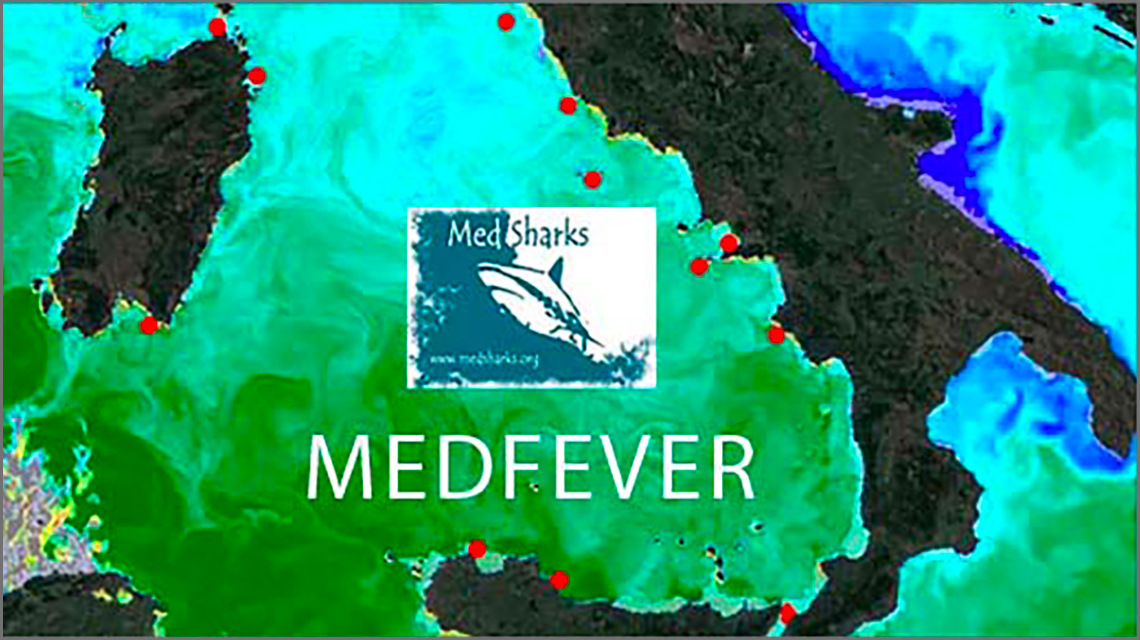Italian National Agency for New Technologies, Energy and Sustainable Economic Development

Environment: 67 thermometer sensors to study the Tyrrhenian Sea’s fever
Researchers and scuba divers join forces to study the impact of global warming on submerged ecosystems.
A network of 67 thermometer sensors positioned from 5 to 60 meters in depth to control the temperature of the Tyrrhenian Sea and monitor the impact of climate change on the marine ecosystem and coastal dynamic processes. This is what has been achieved by the MedFever project, which unites ENEA as a scientific partner, the MedSharks association as coordinator, the Lush company and a group of volunteer scuba divers. The first year’s results were presented during the “National Day of the Sea”, celebrated every year on April 11 to promote awareness of the sea. Less than a year after the first thermometers were placed, temperature profiles have already been published on the open-source SeaNoe platform and are available to the scientific community for research in biology, oceanography, chemistry and climatology.
The data and observations collected by the MedFever divers will enable researchers to better understand the mechanisms underlying the stress to submerged ecosystems—in particular sea fans, coralline algae and orange stony corals—linked to the overheating of water and heatwaves in the sea, a phenomenon that climate scenarios indicate will become increasingly common in the future and that can critically impact coastal ecosystems.
At the operational level, the sensors—roughly the size of a matchbox—have been calibrated by ENEA technicians to attain an accuracy of 0.1°C and measure the sea temperature every 15 minutes. Volunteers of several diving centres positioned them in 18 strategic points near the island of Giglio (Tuscany); Gulf of Naples, Capri and Palinuro (Campania); Strait of Messina, Palermo and San Vito lo Capo (Calabria and Sicily); Gulf of Cagliari, Capo Figari, Santa Teresa di Gallura and islet of Mortoriotto (Sardinia), and Nettuno and Ponza (Lazio).
“From the calculations carried out by ENEA, crucial information has emerged concerning some of the processes that regulate the high-frequency variability of sea currents and temperature”, states Ernesto Napolitano, an oceanographer at ENEA’s Climate Modelling Laboratory. “Furthermore, integrating the measurements with our operational models—including MYTH, for the circulation of the Mediterranean—has allowed us to identify phenomena such as internal waves induced by the combined action of wind and tides at the “Banco di Santa Croce” measuring site, in the Gulf of Naples. These results will be published in the prestigious international journal Estuarine, Coastal and Shelf Science [1].
“Medfever is an unprecedented civil society initiative in our country: with thoroughness, “volunteer researchers” installed about twenty stations throughout the Tyrrhenian Sea where, prior to MedFever, there were only two temperature monitoring stations”, stresses Eleonora de Sabata, president of MedSharks and the project coordinator. “Without any terms of comparison, it is too early to say whether this past summer was a ‘hot’ one, but scuba divers in different places have reported the stress of sea fans, stony corals, sponges and calcareous algae”.
Thanks to the contribution of Lush, which has renewed its support for 2022, the MedFever network will continue to grow, thanks also to the Coast Guard scuba diving teams that will install five more stations in the coming weeks.
“These measurements are a point of departure for the long-term monitoring of the warming of the Mediterranean and to oversee the state of health of our sea, a fundamental resource for our planet given its scientific, cultural, recreational and economic value”, concludes de Sabata.
The ‘volunteer’ monitoring network was founded by MedSharks, an association dedicated to the study and conservation of the Mediterranean environment. For the past seven years, it has constantly measured the temperature in an underwater oasis in the Gulf of Naples, offering scholars a completely new perspective on what happens beneath the surface of the sea.
Photo & Video gallery
For more information:
Ernesto Napolitano, ENEA – Climate Modelling Laboratory- Email:
For the MITO model: https://giotto.casaccia.enea.it/mito/
Freely reproducible video: https://youtu.be/_bhWzhz0my4
Catalogue: https://youtu.be/usZd2YsEdRc
For open-source data: https://www.seanoe.org/data/00752/86403/
Article in Estuarine, Coastal and Shelf Science: “Marine monitoring by SCUBA divers reveals new aspects of the temperature variable inside the Gulf of Naples (Tyrrhenian Sea)” - by E. de Sabata, E. Napolitano, R. Iacono, M. Palma, G. Sannino, A.
